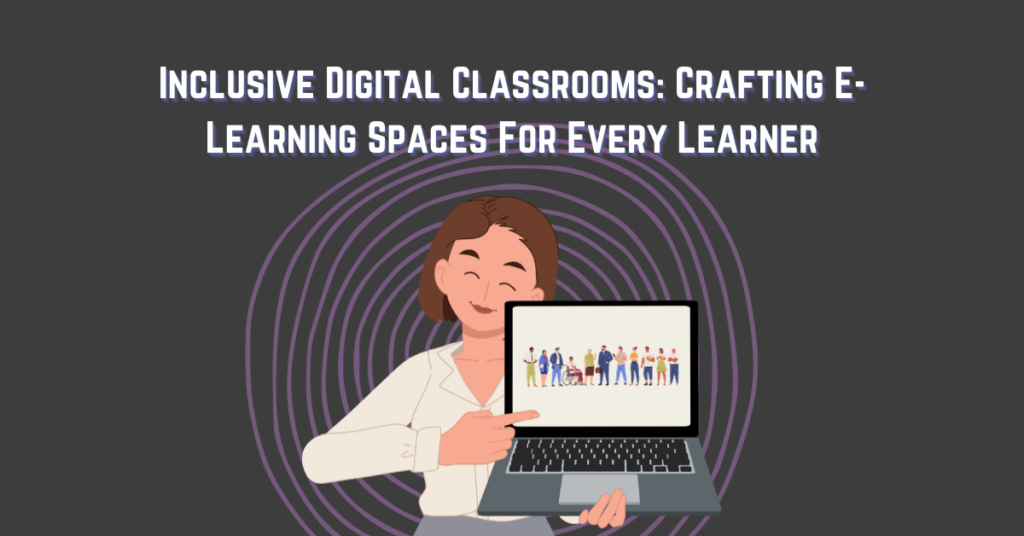
Introduction
In the grand tapestry of learning, each student is a unique thread, bringing their own colors, patterns, and textures to the learning landscape. In a physical classroom, these nuances are recognized and celebrated. But what about in the digital realm?
The rise of e-learning platforms has transformed education, breaking down geographical barriers and offering unprecedented flexibility. But as we sail into this new sea of learning, we must ensure that our ship is equipped to support every learner on board. Let’s explore how we can create inclusive digital classrooms that cater to everyone’s needs.
The Challenge: Accessibility in E-Learning
In the world of e-learning, accessibility is a key challenge. Learners with different abilities, learning preferences, and linguistic backgrounds can face barriers that hinder their learning experience. From visual disabilities that make reading on-screen text difficult to auditory disabilities that complicate listening to lectures, the obstacles are varied and complex.
The Solution: Inclusive E-Learning Platforms
The good news? With thoughtful design and innovative technology, we can transform these challenges into opportunities.
Here’s how we can shape inclusive digital classrooms:
Universal Design for Learning (UDL)
At the heart of inclusive e-learning is the principle of Universal Design for Learning (UDL). UDL encourages the development of flexible learning environments that can accommodate individual learning differences. This involves offering multiple means of representation, engagement, and expression, making learning accessible and meaningful for all learners.
READ: The Power of Universal Design for Learning in Creating Inclusive Classrooms
Assistive Technologies
Assistive technologies are a powerful tool for making e-learning platforms more inclusive. Text-to-speech and speech-to-text software can assist students with visual impairments or dyslexia. Captioning and sign language interpretation can support deaf or hard of hearing learners. Features like adjustable text size, color contrast, and keyboard navigation can make navigating the platform easier for everyone.
Diverse Content Formats
Offering content in diverse formats can also enhance inclusivity. This could involve presenting information as text, audio, video, and interactive modules. By catering to different learning preferences and abilities, diverse content formats ensure every learner can engage with the material in a way that works best for them.
Culturally Responsive Instruction
Inclusive e-learning platforms should also consider cultural inclusivity. This involves incorporating culturally responsive teaching methods, acknowledging and respecting the diverse backgrounds and experiences of students. This can create a more engaging, inclusive, and effective learning environment.
Final Thoughts: The Future of Inclusive E-Learning
In the quest for inclusive digital classrooms, we are charting new territories in learning. By embracing universal design principles, harnessing assistive technologies, offering diverse content, and practicing culturally responsive teaching, we can ensure our e-learning platforms serve every learner’s needs.
As we journey further into the digital age, let’s remember to carry the spirit of inclusivity with us. After all, in the grand tapestry of learning, every thread matters. And it’s only when every thread is woven together that we can truly appreciate the richness and beauty of the educational landscape.

